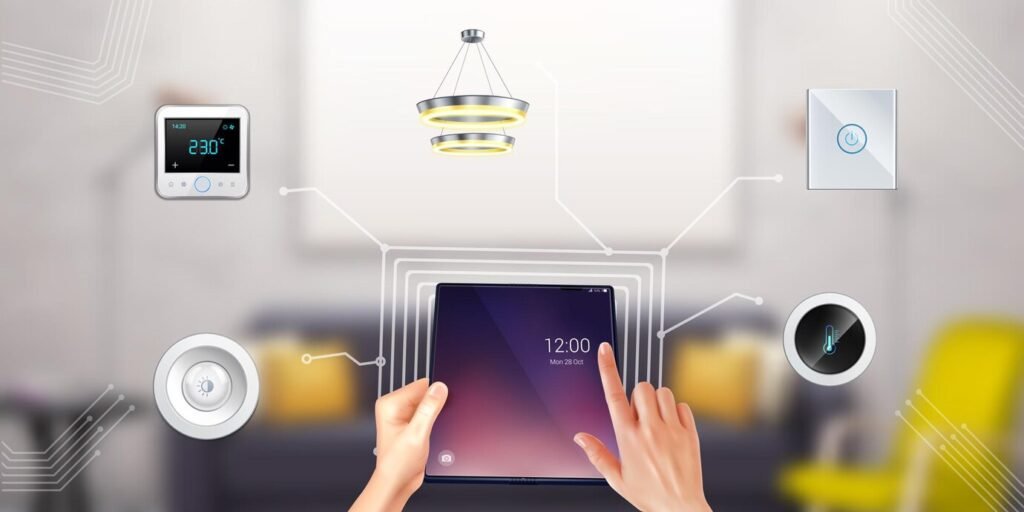As the world grapples with the genuine variables of ecological change and regular degradation, the push for eco-obliging choices rather than traditional transportation systems has never been more basic. Among the most uplifting deals with any consequences regarding decrease ozone draining substance releases, air defilement, and dependence on non-environmentally friendly power sources are electric vehicles (EVs).
Electric vehicles are changing the manner in which we contemplate transportation, offering a cleaner, more supportable future. This article investigates the mechanical progressions, natural advantages, financial ramifications, and eventual fate of electric vehicles, delineating why they are situated to assume a critical part in store for eco-accommodating transportation.
Electric Vehicles
Electric Vehicles (EVs) are changing the auto business by giving a cleaner, more viable choice as opposed to traditional fuel and diesel-controlled vehicles. Constrained by power set aside in battery-controlled batteries, EVs produce zero tailpipe releases, making them a basic solution for diminishing air tainting and battling natural change.
As battery development pushes, EVs have become more sensible, with extended driving compasses and faster charging times. The gathering of electric vehicles is maintained by government rousing powers, developing charging systems, and the auto business’ shift towards sensibility.
Eco-friendly Cars
Eco-accommodating Vehicles can’t avoid being vehicles expected to restrict their normal impact utilizing down to earth advances and energy-useful systems. These vehicles often integrate electric vehicles (EVs), creamer vehicles, and vehicles constrained by elective powers like hydrogen. Eco-obliging vehicles produce less or zero surges diverged from standard gas-filled vehicles, which reduces air pollution and ozone-draining substance radiations. Electric vehicles, for instance, take off in batteries, discarding tailpipe spreads endlessly out.
Half breed vehicles join a conventional gas-powered motor with an electric engine, offering further developed eco-friendliness and lower emanations. Environmentally friendly power sources further supporting. Their allure in the journey for a more manageable future.
Green Transportation
Green transportation alludes to methods of eco-friendly cars transport that are harmless to the ecosystem and expect to diminish the carbon impression related with customary fuel controlled vehicles. This incorporates electric vehicles (EVs), cross breed vehicles, public transportation frameworks running on environmentally friendly power, bikes, strolling, and carpooling. Green transportation techniques are intended to limit air contamination, lessen ozone depleting substance discharges, and advance energy effectiveness.
For instance, electric vehicles produce zero tailpipe discharges, while public travel frameworks that sudden spike in demand for power or hydrogen energy units lessen the quantity of individual vehicles out and about, diminishing blockage and emanations. Green transportation additionally includes framework enhancements, for example, charging stations for EVs and devoted bicycle paths, making maintainable travel more helpful and available.
Electric Car Technology
Electric vehicle innovation alludes to the headways and parts that empower electric vehicles (EVs) to work proficiently and economically. At the center of this innovation are electric engines, which supplant the customary gas powered motor found in fuel controlled vehicles. These engines are fueled by battery-powered batteries, commonly lithium-particle, that store power and supply capacity to the engine.
Key advancements in electric vehicle innovation remember enhancements for battery energy thickness, which increments driving reach, and the improvement of quick charging arrangements, permitting drivers to rapidly re-energize their EVs more. Also, regenerative slowing mechanisms catch energy during slowing down and feed it back into the battery, working on generally speaking effectiveness. Electric vehicle innovation additionally coordinates progressed programming frameworks for vehicle control, independent driving, and continuous energy the executives.

The Rise of Electric Vehicles
The idea of electric vehicles isn’t new. Truth be told, electric vehicles have been around since the nineteenth hundred years, some time before the gas powered motor assumed control over the auto business. Notwithstanding, it was only after late many years that EVs started to recapture prevalence, on account of progressions in battery innovation, expanding worries about ecological maintainability, and the worldwide requirement for cleaner energy arrangements.
By and large, electric vehicles confronted critical difficulties, including restricted driving reach, long charging times, and the significant expense of batteries. Be that as it may, developments in battery science and assembling processes have prompted emotional upgrades. Current EVs, for example, the Tesla Model S, Nissan Leaf, and Chevy Bolt, can now travel many miles on a solitary charge and are equipped for re-energizing to 80% in less than 60 minutes, tending to a large number of the early worries related with EV reception.
Mechanical Headways in Electric Vehicle Improvement
One of the essential purposes behind the fast development of electric vehicles is the constant improvement in EV innovation. Key to this improvement is the headway in battery innovation, which has essentially expanded the energy thickness of lithium-particle batteries the most normally utilized battery type in electric vehicles. These developments have prompted longer driving reaches and further developed execution, making EVs more functional for regular use.
For instance, the scope of an electric vehicle, which was once restricted to only 100 miles or less on a solitary charge, has now expanded to more than 300 miles for the overwhelming majority standard models. Tesla’s Model 3 and Model S, for instance, brag scopes of 350 miles or erring on a full charge, making EVs more cutthroat with customary gas fueled vehicles, which regularly offer a comparative reach.
Ecological Advantages of Electric Vehicles
Perhaps of the most persuading reason behind the unlimited gathering of electric vehicles is their positive biological impact. Not by any stretch of the imagination like traditional vehicles, which consume non-sustainable power sources and emanate carbon dioxide (CO2) and various toxic substances out of sight, EVs produce zero tailpipe surges, making them a basic solution for decreasing air defilement and directing natural change.
Transportation is one of the biggest supporters of worldwide ozone harming substance outflows, liable for almost a fourth of all emanations around the world. By changing to electric vehicles, we can altogether lessen how much CO2 and other hurtful poisons delivered into the environment. As a matter of fact, studies have shown that in any event, while representing the power used to charge EVs, electric vehicles regularly produce far less outflows than their fuel partners.
Also, the lifecycle of an EV from assembling to removal is less hurtful to the climate contrasted with ordinary vehicles. While the development of EV batteries requires energy and assets, over the lifetime of the vehicle, EVs commonly have a more modest carbon impression than gas powered motor (ICE) vehicles. As the network becomes greener with more sustainable power sources, the carbon impression of electric vehicles will keep on contracting.

Financial Ramifications of Electric Vehicle Reception
The far and wide reception of electric vehicles has huge monetary ramifications for the two people and enterprises. While the forthright expense of EVs has generally been higher than that of gas vehicles, the expense of electric vehicles has been consistently diminishing because of progressions in assembling and economies of scale. This makes EVs more reasonable for the typical customer, particularly as state run administrations offer appropriations, refunds, and expense motivators to counterbalance the underlying expense.
Notwithstanding the price tag, electric vehicles are by and large less expensive to keep up with than customary vehicles. EVs have less moving parts, disposing of the requirement for oil changes, fumes frameworks, and different parts that require normal upkeep in fuel controlled vehicles. This implies that proprietors of electric vehicles can save money on fix and upkeep costs over the existence of the vehicle.
Electric vehicles
Electric vehicles additionally offer significant reserve funds in fuel costs. The cost of power per mile is a lot of lower than the cost of gas, implying that EV proprietors save on fuel. In certain districts, EV proprietors could in fact charge their vehicles utilizing sun based power, further decreasing their energy expenses and dependence on the framework.
The Street Ahead Difficulties and Open doors
While the eventual fate of electric vehicles is splendid, a few difficulties stay before they can accomplish boundless reception internationally. The main obstacle is the accessibility and availability of charging foundation. Albeit the quantity of charging stations is quickly expanding, numerous locales, especially country regions, actually need adequate charging organizations. Extending the charging framework to guarantee that EVs can be effectively re-energized on lengthy outings is critical for expanding shopper trust in EVs.
Battery innovation likewise stays a vital area of improvement. While lithium-particle batteries have made considerable progress as far as energy thickness and moderateness, there are still worries about battery life expectancy, reusing, and the natural effect of mining materials like lithium, cobalt, and nickel. Analysts are dealing with growing new battery innovations, for example, strong state batteries, that could offer longer life expectancies, quicker charging times, and diminished natural effects.
Conclusion
Electric vehicles address the future of eco-accommodating transportation, offering a practical answer for the earnest difficulties presented by environmental change, air contamination, and petroleum product reliance. With headways in innovation, the proceeded with development of a charging foundation, and developing purchaser interest, electric vehicles are ready to turn into a prevailing power in the worldwide car market.
As the world keeps on changing toward cleaner and more practical energy frameworks, electric vehicles will assume a vital part in forming a greener, more economical future. With each new move toward their turn of events, electric vehicles carry us more like an existence where transportation no longer damages the climate, however rather adds to a cleaner, better planet.










